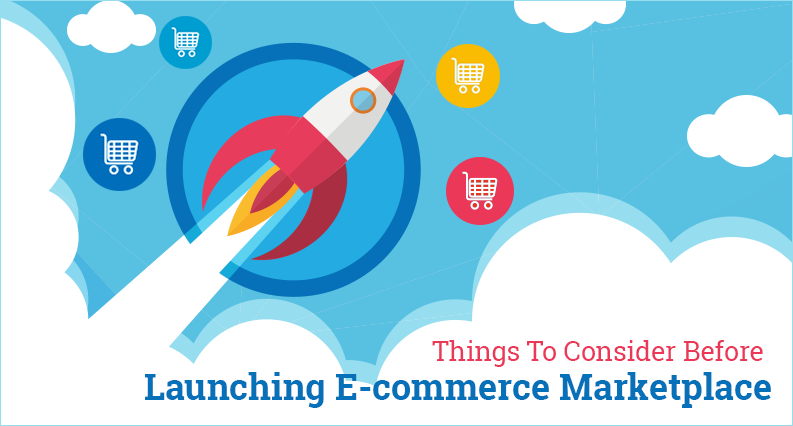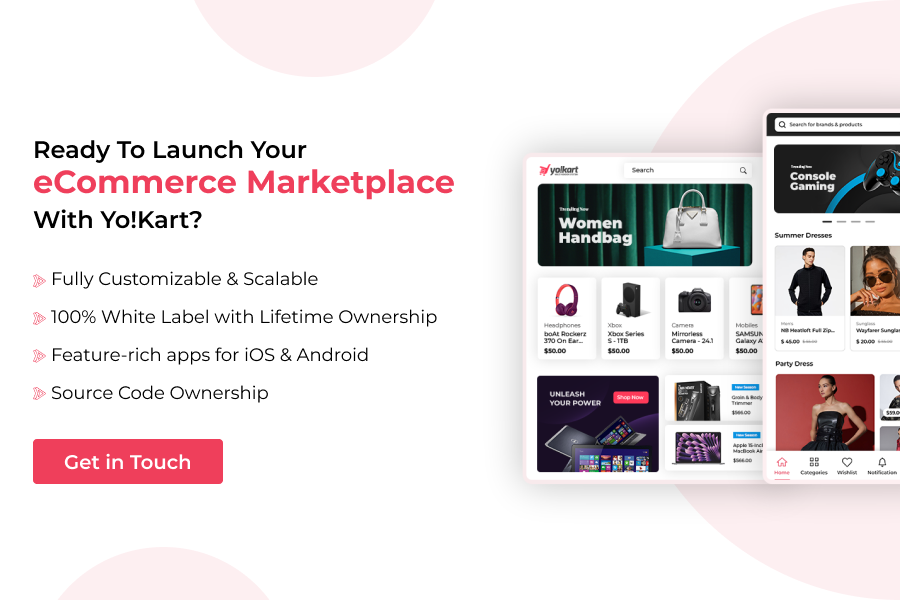Instead of developing an eCommerce marketplace from scratch, the process has become quite seamless with the advent of multi vendor marketplace platforms. The platforms are designed to deliver a readymade multi-vendor store for businesses of all sizes. While these are ready-to-launch solutions, still there are a few steps that need to be undertaken by aspiring entrepreneurs, before launching an online marketplace. Here is a list of all the important things to do before launching your e-commerce marketplace.
Table of Contents
- Identify your niche marketplace idea
- Initiate market research and competitor analysis
- Create a Unique Brand Identity
- Compare and Choose the Ideal eCommerce Platform
- Launch Your E-commerce Marketplace and Mobile Apps
- Onboard Sellers
- Create an Online Presence
- Promote Your eCommerce Marketplace
- Conclusion
1. Identify your niche marketplace idea
From an online liquor marketplace such as Drizly to a handmade products marketplace such as Etsy, there are many popular niche-specific marketplace ideas a business can adopt. Here are a few steps that you can follow to find your niche market:
- Analyze your areas of interest and create a list of ideas to consider for your niche business
- Identify your potential customers to understand their buying behavior and the challenges they face
- Consider the demographics, customer location, price in the market, and more to discover whether your idea is profitable or not.
These are the primary steps towards building a successful online multi-vendor business. Click here to learn more about the top online multi-vendor business ideas for 2021-22 to help you easily identify your niche marketplace idea.
2. Initiate market research and competitor analysis
For entrepreneurs, analyzing the market is one of the most important things to do before starting an e-commerce business. This gives them a nice idea about their competition, market reach, and targeted user base. The e-commerce sector, in particular, has seen mushrooming of several startups catering to niche areas. This is why initial research offers proper insight using which one can tweak their business model.
3. Create a Unique Brand Identity
Next, it is important to focus on building a strong business identity that conveys the right message to the target audience in a simple yet meaningful way. To build a strong brand identity, you should:
- Conduct an in-depth analysis to determine where your business idea stands in the market.
- Identify core business values that establish your brand’s unique selling proposition (USP).
- Build a creative, consistent marketing approach that resonates with the customers and stays true to your business value.
- Implement strategies to build brand awareness and strengthen the brand.
These steps will help establish a unique brand identity for your e-commerce marketplace business.
Transform your marketplace idea into reality with the right assistance
4. Compare and Choose the Ideal eCommerce Platform
In the current market dynamics, the most economical and feasible way to launch an online marketplace is via an e-commerce platform. Therefore, the next practical step should be to compare and choose the right multi-vendor e-commerce software with essential features inbuilt. And, the best way to do that, is to try the online demos of every e-commerce platform and explore the front end, admin dashboard, seller dashboard, and individual vendor storefront. For instance, YoKart – our robust multi-vendor solution – offers an in-depth demo for all four aspects of a marketplace. Also, Yo!Kart comes with all essential eCommerce features and integrations – critical for your marketplace- right out of the box.
5. Launch Your E-commerce Marketplace and Mobile Apps
After finalizing your eCommerce multi-vendor platform, the next step is to just set up the marketplace on your choice of server. The process for deployment is as such:
- Once you’ve purchased the solution, a project coordinator is assigned to interact with you and gather essential information
- You can discuss any customization request with him/her and share credentials of your choice of server
- Next, the project coordinator tests the solution on the server
- Lastly, your online marketplace and mobile apps (if included) are deployed live in a few business days after proper validation and testing.
6. Onboard Sellers
Once your marketplace is live, it is time to invite sellers to register, set up shop, and list products on your marketplace to start selling. This would help you avoid the situation where you have a marketplace but no seller to sell products or no buyers to purchase items. This is a critical step, as you also need to decide and set up your commission fee on individual transactions. Plus, seller onboarding will help with the chicken-egg problem – a common conundrum faced by marketplace owners on whether to onboard vendors first or sellers.
7. Create an Online Presence
You must also create social media profiles for your online marketplace, as these are among the biggest marketing channels to reach your targeted user base. Also, you can create business listings on popular search engines such as Google and Bing. Ensure that you provide exactly the same information across all social media profiles and business listings. Moreover, it is equally important to write and publish SEO-optimized blogs on the marketplace to target your audience and generate more traffic. Consider these unique tips shared by the industry’s top experts to increase sales of your online store.
8. Promote Your eCommerce Marketplace
For your marketplace to gain popularity among the targeted user base, you need to promote your multi-vendor store. No matter what e-commerce solution you pick, your business will not earn substantially if you do not create/implement effective marketing strategies. Hence, you must execute reliable marketing tactics for your business growth. A pre-launch marketing plan is designed to earn much-needed popularity before the marketplace even starts operations. You can also utilize paid marketing like Google Adwords to promote your online marketplace.
Conclusion
These eight things ensure that you have an online multi-vendor store up and running without any hassle. Although launching an e-commerce marketplace has become fairly easy, thanks to e-commerce platforms like YoKart, there are still certain aspects to be kept in mind before launching your marketplace. By following the process mentioned above, you can quickly start your e-commerce multi-vendor business and drive success while ensuring a smooth sail during and after launch.




